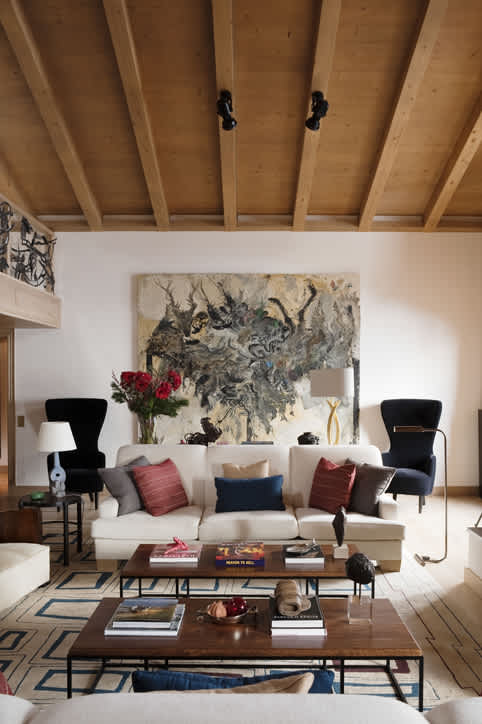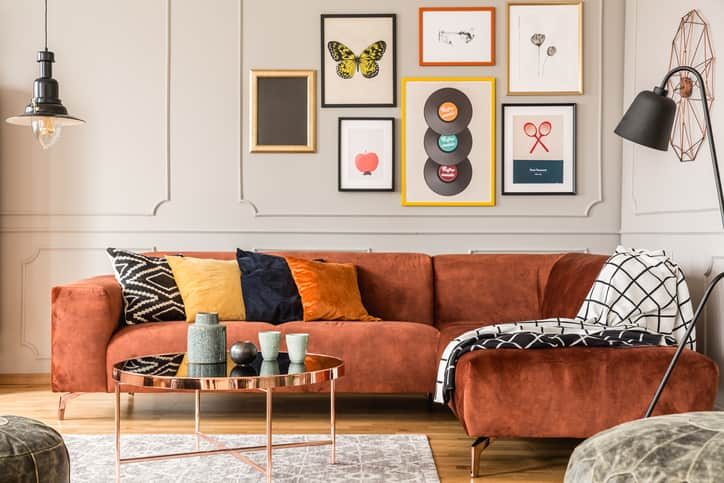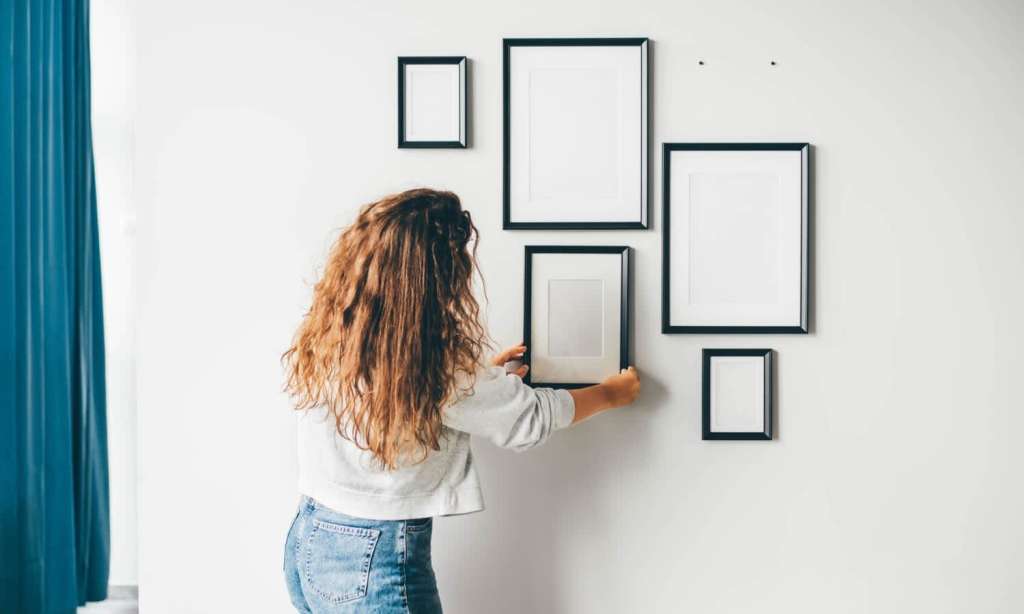Tell us about your most outrageous splurge for your chance to win a $200 gift card for The Iconic. Click here to enter.
One of the most popular ways to personalise a space and make it feel like a home is to add art. But often, it can be tricky to find the ‘right’ art that fits, the best place to hang it and even where exactly on the wall it should be hung.
“I believe that while every space is unique, there are a few dos and several don’ts to follow when it comes to displaying art and curating a space,” says Kerry-Anne Blanket, art expert and founder of KAB Gallery on NSW’s Central Coast. Ahead, Blanket shares four of those tips.
Do Consider the Size of the Piece
When it comes to original paintings, according to Blanket, size matters. “You want the artwork to pull the space together. Too small, and the room can look incomplete; too big and the room can feel overcrowded,” she says.
When thinking about size of your art, think about the space of your room and the size of furniture in it, Blanket adds.
“If you’re hanging a piece of art above large furniture such as a sofa or bed, a great rule to follow is that the work should be about two-thirds the width of the piece of furniture. If your artwork doesn’t fit this scale, you can cheat by having it framed with a more generously sized frame to increase the work’s overall size and give it a greater presence on the wall.”

If budget is preventing you from purchasing a bigger work for your larger space, Blanket suggests opting for a selection of smaller pieces positioned alongside one another or eclectically as a staggered gallery hang. This way, several smaller and less expensive works may be admired both up close and from afar, all the while making a collective impact in the larger room.
On the flip side, Blanket cautions against buying big art for small spaces. “A painting needs some breathing space so you can truly appreciate it from every angle,” she says. “A general rule is that a painting should take up 60 to 75% of available wall space, which isn’t covered by furniture or mouldings.”
Don’t Be Too Matchy-Matchy
“Gone are the days of having to adhere to a particular genre, subject matter or medium of art,” says Blanket. “Too much of one style, even if scattered throughout a home, can be overwhelming or even boring. Instead, look for pieces that blend to your colour scheme and branch out from there.”
“Switch it up and avoid the clichéd ‘gallery effect’ where you limit the curation to the exact same type of art in every room of the home. Instead, switch up between canvases, and framed works, explore the richness of tapestries or showcase a bold sculpture on a pedestal in a space in lieu of the more predictable framed painting. Using various art mediums and styles in your space is a fun way to showcase the dimensions of your personality.”
And while you don’t necessarily need to stick to artwork with the same colours as your decor, Blanket suggests, instead, be mindful of how you position colours that clash.
“The art you buy should reflect your tastes, so get creative with how you position various contrasting styles for a polished result,” she says.
Do Think About How You Frame Art
“Believe it or not, the framing of your art can make or break the work once it’s hung,” explains Blanket. “If you’re planning to invest in original art, it’s important to also budget for professional framing.”
When it comes to selecting a frame, avoid making the mistake of going either too decorative or too boring. “Framing options are vast, and can really impact the finish of a piece. While plain box frames have been on trend for a while, a decorative frame can really build on the character of the work if chosen wisely.”

Blanket also suggests considering ways other than framed and hung of displaying art throughout your home, from leaning paintings on furniture, to even using shelves or bookcases to showcase a collection. “There are so many interesting ways to get creative when it comes to displaying art,” she says.
Do Invest in Original Art
“There are many who believe that original art comes with a price tag so hefty it’s only for the rich and famous, but that’s simply not true,” says Blanket. “Original art is available at a wide range of price points from as little as a few hundred dollars.”
“Opting for original art over printed pieces not only gives you ownership over a completely original piece that nobody else will have, but if you’re savvy, could be an appreciating asset that’s also beautiful to admire,” she says.
“If you’re unsure where to start, work with an expert gallerist to select that special piece for your home. This will also help you invest well in terms of a work that’s likely to appreciate over time.”
According to Blanket, while prints have their place, quality original art tells a story that’s inspiring and unique. It adds a sense of luxe and depth to a space that other furnishings can’t. “Original art can start from very little, so buy what you can afford and let art enrich your life,” she says.
Read more stories from The Latch and subscribe to our email newsletter.







